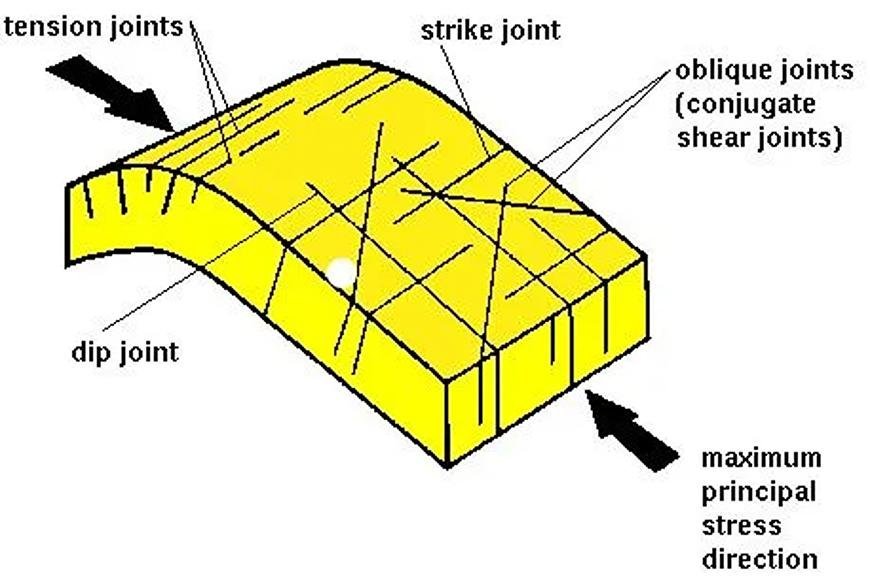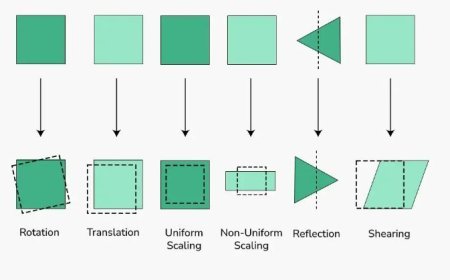JOINTS AND ITS TYPES
Rock's Weak Spots: Joints - Natural fractures where rocks break, classified by formation (tectonic, cooling) or geometry (planar, curved).

Joint
- There are cracks or breaks in rocks that haven't moved, which are called joints. All kinds of rocks have joints in them. They could be straight up, down, or even horizontal.
- The way you measure their dip and strike is the same as how you measure geological layers.
- When rocks cool down or get closer together, they shrink, which makes joints. In some cases, they are also made when rocks are pushed or pulled during earth moves.
- There are usually a lot of joints that are straight across from each other.
- These joints next to each other make up a "joint set." There must be at least two joint sets in a joint system.
Sorting Joints into Groups
- Based on where they come from, joints can be put into two groups:
Tension joints
- Tension joints are defined as joints created by tension forces.
- The sides of these joints are rough and uneven, and they are pretty open.
- Tense joints can be seen in lava flows as columnar joints and in the anticline as horizontal joints that run parallel to the fold's axis.
Shear joints
- Shear joints happen when rocks fold and crack, putting immense shear loads on the rocks.
- It's easy to see that these joints are very clear and closed up tight.
- A "conjugate joint system" is made up of two sets of shear joints that meet at a sharp angle.
- Based on their height and shape, they can be put into the following groups:
Strike Joints
- "Strike joints" are joints that run parallel to the way rocks are pushed together.
Dip Joints
- Joints that run along the dip of rocks are known as "Dip Joints."
Oblique Joints
- "Oblique joints" are cracks that run in a direction that isn't the same as the strike or dip of the rock beds.
Bedding Joints
- The joints in a sedimentary rock that run parallel to the bedding lines are known as "bedding joints."
Master Joints
- Most joints in sedimentary rocks run in two directions, almost at right angles to each other.
- One set of joints runs parallel to the direction of the dip, and the other set runs parallel to the direction of the hit.
- One set of joints is usually stronger than the other, and it goes a long way. "Master Joints" are joints that are very well formed.
Mural Joints
- Granites have three sets of joints that are at right angles to each other and split the rock into blocks that are more or less cube-shaped. This kind of joint is known as a "mural joint."
Sheet Joints
- On the faces of granites, you can often see sheet joints.
- These cracks run horizontally and were made when the rock cooled down because of strain.
- These joints are curved in some places and mostly run straight to the ground. Near the ground, they stand out more and are closer together.
Columnar Joints
- Groups of tabular igneous rocks, like dykes, sills, and lava flows, form columnar joints.
- The rock is split into hexagonal columns that are lined up at right angles to the main cooling surface by these joints.
- The columns in lavas and sills are straight up and down, but the columns in dykes are more or less flat on the ground.
What's Your Reaction?



































